
December 20, 1991
The wonderful thing about being an adult is that, when you walk into a toy store, you don’t have to ask your parent’s permission to buy something.
It’s great. I see little boys tugging on their mother’s sleeves or skirts, using that magic word with startling rapidity when just the night before at the dinner table, they couldn’t remember it to save their life. “Please,” they beg, “please please please pleezpleezpleez…”
There are the little boys grasping towards the new line of X-Men toys. Toys where they can don a clawed glove to be like Wolverine, or a Cyclops mask with working visor (although whether the visor will, in fact, contain the power of a force beam is subject to debate. There’s nothing on the box about it).
However, I don’t pay as much attention to the little boy toys (except when it’s something I want, of course). With only female-type offspring in my brood, my Channukah want-lists (generously provided yearly, and even semi-annually, by my daughters) are generally filled–not with superhero chachkas–but with the latest in Barbie fashions or Pretty Pretty Princess or something else packaged in pink and lavender.
(At least this year I can be grateful that the license we all thought was dead, but which has now returned from its little plush grave, did not make the David family cut. Yes, there were no requests at casa David for the new line of “Care Bears,” and I tend to think this does not bode well for the manufacturer. Why? Because my kids want everything. Whatever commercial hits the airwaves, one or the other of the two older girls invariably says, “Oh, Daddy, pleeeeease!” When the commercials for Care Bears comes on, my kids go to the kitchen for a snack. No, not well at all.)
However, this year, upon perusing the toy store aisles and noticing such intriguing oddities as that, in the new action figure line based on “Hook,” the captain of the title has his hook on the wrong hand, I began to take notice of something that was really rather interesting.
Actually, the only reason I took notice of it was because my wife pointed it out to me. She reminded me of something that we, as young people and teenagers of the 1960s and 70s, and parents of the 80s, had been fighting for during those decades. A small but determined battle that seemed, at the time, to have a great deal of merit.
Something that we have been acutely aware of when we first began to think for ourselves, and reminded of again when our first child was born and we were determined to carry through on the concept that she could grow up to be anything she wanted to be.
Now let’s be honest here. This philosophy is far more important to parents of girls. Because, you see, parents of boys know that, in today’s society, the odds are much greater that their child really can grow up to be anything he wants. But parents of girls, when they say this to their kids, are whistling in the dark. The fact is that although great progress has been made, girls really can’t grow up to be whatever they want because a society run by males won’t let them.
But no parent wants to say to his or her daughter, “You can be whatever you want, within limits.” So instead parents do what they can to try and make this prediction as true as possible. And generally, they start young. The first vow that is made is that their kids will be raised in an atmosphere that is entirely free of gender bias.
The problem is, there’s only so much you can do. You can be supportive of your daughter when she wants to play in the local softball league. You can not wince if your son wants a doll.
(When I was a kid and “Mary Poppins” was in the theaters, I saw that Sears was offering a neat-looking doll of her. Already a budding Disneyana fan, I asked my father about it and he looked at me in horror. “You want a doll?” he said, staring at me as if I’d just sprouted antlers. And I quickly said, “Who–me? No. Of course not. I just thought it would make, uh, a nice present for Lori Kane” (the little girl who lived two doors down). My father nodded, relieved albeit still a bit suspicious. I’m half-tempted to call him right now and say, “Hey, dad! I just bought the fashion doll of Belle from ‘Beauty and the Beast,’ and I keep it in my display case in my office, next to my Ariel doll! Guess that means I’ll grow up to be a sissy, huh, dad?! Bwwwaa-ha-ha!”)
Where all this is going is that, as a parent, one wonders when the toy companies as a whole will catch up with this forward thinking. Toys that don’t bludgeon children into accepting pre-determined roles have been something that parents have requested for decades.
Judging by our recent stroll through “Toys-R-Us,” it ain’t going to happen anytime soon.
What I discovered, with my wife pointing out some of the greatest offenders, was that toy manufacturers are helping to determine for us just what precisely what is expected of specific genders, virtually from the moment kids become self-aware, through to when they’re teenagers. Many toys give very precise outlines of what is expected and what is acceptable.
Now granted, there are tons of early-learning toys that are designed to stimulate the senses, prime the imagination, and stir the child further to new intellectual heights. But most of these toys are much more easily found in small specialty stores located in larger malls. The places where the real action is: Toys-R-Us, Playworld, Kay-Bee: These places are the domain of Fisher Price, Playskool, Little Tykes, Tyco and the like. And these companies, through packaging and design, are gearing many of their products into stereotyped and “accepted” roles.
The first thing you notice when inspecting toys with an eye towards role control is the basic coloring. Now we’re all used to Barbie toys being packaged in pink and purple. to a degree where–when you see them all lined up in an aisle–you have to fight back a gagging reflex.
But the color coding extends beyond that. Because what you don’t notice immediately is that “boy” toy are consistently packaged in strong, vibrant, primary colors. We’re not talking about limiting it to the traditional “blue for boys” motif. No, all the most the powerful colors of the spectrum adorn boy packages: patriotic red, white and blue, followed by vigorous yellow and green. Red, yellow and green are colors of command. Don’t believe me? Check out a traffic light. Not only do the boxes carry these colors, but frequently the models on the boxes are wearing clothes in similar hues.
Boy’s toys are dynamic, forceful, take-charge colors. Girls, on the other hand, have all their toys packaged in pink, lavender, and other soft, non-dynamic, non-threatening, non-take-charge colors.
And then there are the types of toys.
To clarify here–when I discuss “Girls toys” vs. “Boys toys,” I’m differentiating based on the clearly intended market. Girls toys not only have the color coding, but also have a little girl demonstrating the toy on the box; Boys toys have little boys doing the modelling. The usage is obvious. Of course, you can buy boy-packaged toys for your girl, and vice versa. But we’re discussing intent here. Besides, what if you intend to give it as a gift for someone else? Are you sure how they’ll react if you give a “boy’s” toy to their little girl, or vice versa? Probably not–and why take the risk?
They start you when you’re still in the crib, and coincidentally, the discrimination is the most outrageous at a time when the kids are youngest. Playskool manufactures, for six months and up little girls, “Baby’s First Purse.” Pink, of course, with various teething rings and such in the shapes of keys and all the other things you’d find in a purse in a typical purse. (Although my personal favorite object, a teething Tampax, is mysteriously absent.)
Okay. Fine. Women carry purses. So what does Playskool offer as the equivalent for boys? The logical thing would be “Baby’s First Wallet,” right? Or perhaps “Baby’s First Briefcase?”
Uh uh. Little boys get “Baby’s First Doctor’s Kit.”
That’s laying it on the line early on, ain’t it.
Now if that were isolated, it would be one thing. But it carries through, all through the developmental years.
Is your little girl trying to learn to walk, and you want to get her a walking toy? One of those things with handles and wheels for her to push? Then you’re invited to buy the Playskool Steady Steps Grocery Shopping Cart, or the Fisher-Price Walker Stroller to push your baby doll, or the Fisher-Price Pick Up and Go Vacuum cleaner. If you’re a boy, however, then you get the Playskool Walker Firetruck (which admittedly does features a woman seated in the passenger seat of the Firetruck waving. God forbid she should be driving, though), or the Fisher Price Pick Up and Go Dump Truck.
So let’s see what we’ve got so far: Boys become doctors or truck drivers or firemen. Girls become mothers and shoppers and clean up. Now there’s progress for you.
Okay. Now your kid’s a toddler. A toddler girl can play with Fisher-Price’s Toddler kitchen. The male equivalent? The Toddler Basketball and Toddler Bowling.
Child’s a little older? Getting underfoot in the house, and you want them to play outside in the sandbox? Want to buy something more elaborate than the standard pail-and-shovel. Once again, your little girl can thrill to the Fisher-Price Sand Kitchen, with various kitchen utensils to scoop and mold sand sculptures. What does your little boy get? The Fisher-Price Sand Workshop with toy power tools.
Actually, tools and workshops are the biggest male-only domain of children’s toys. There were about six different variations on carpenter’s tools, tool belts, and other wood-working or home repair implements, and every single one of them was packaged solely for boys: A smiling, blue-and-red clad boy standing there proudly wielding his little tools, sometimes accompanied by beaming father. The only manufacturer who allowed a female to appear on any package was Little Tykes. Their Little Tykes Tool Pouch featured a grandfather smiling down at his woodworking grandson. The Little Tykes Measuring Set, similarly packaged, actually featured a mother, smiling down at her woodworking…son. Daughter? Get real.
Your kid ready for building toys or those snap-together building bricks? Tyco makes Building Superblocks in blue and red for boys to build houses and trucks. Girls get lavender blocks to construct a teen bedroom. Thus we perpetuate that the domain of the male is either out on the road or anywhere in the house, or even building houses, but a female’s domain is the bedroom. Or is that all? Heck no. Lego packages red, white and blue Legos for boys to construct buildings. They also package purple and pink Legos for girls to construct the one place females are allowed to aspire to, aside from the kitchen, supermarket, and bedroom: Namely, a shopping mall.
The environment of the shopping mall is an extremely popular one. Once your child is older, and ready for games of more sophistication than “Rock ’em Sock ’em Robots” (all boys pictured) or “Pretty Pretty Princess” (all girls pictured), young ladies can actually have their choice of games directed at them. Pressman gives us Electronic Mall Madness, while Tyco graciously produces Meet Me at the Mall. These are typical “girl” games. What’s a typical “boy” game? Milton-Bradley’s “Hero Quest”, an adventure game with nary a female in sight. The message is clear: Boys go on grand adventures seeking treasure and bring it home so that girls can spend it at the mall.
Now are all kid’s toys like this? No. For example, Avco produces Dr. Mickey’s Medical Kit, a Disney tie-in featuring a box that has a little girl on one side, and a little boy on the other. The box can be displayed either way, and in the store we went to they were side-by-side.
Fisher-Price produces My Pretty Purse for young girls, and for little boys, My Shaving Kit. That seems equitable to me: I don’t think a kit for little girls to pretend shaving their legs would really sell all that much, and besides, it’s better than purse vs. doctor’s bag. Speaking of doctor’s, Fisher-Price also makes a Medical Kit where, believe it or not, a girl is pictured using a stethoscope on a boy. Labelling it “Medical Kit” rather than “Doctor Kit” dodges the entire issue, avoiding the boy=doctor, girl=nurse, and instead concentrating on the notion of treating the sick.
Interestingly, although females are generally not allowed to invade male toy domains, boys are sometimes allowed into girl places under the right circumstances. Little Tykes also makes a playset called a Party Kitchen, and naturally there’s a little girl in there slaving away making a meal. But lo and behold, there’s a little boy also pictured on the box. Not that he’s being much help, but at least he’s there rather than sitting in some sort of living room playset shouting, “When’s dinner ready?”
Also, Fisher-Price makes a Laundry Center. Now get ready for this: the girl is depicted doing the wash, but amazingly, the little boy is there, big as life, doing the ironing.
As for the startling amount of Marvel Comics-oriented toys on the market, such as the X-Men Danger Room playset and such–there are no little kids depicted on the box. Now this might be to try and make the toys as broad-based as possible in their appeal. Then again, it might be so that adult comics fans buying them for themselves might not feel self-conscious.
Of course, the bottom line is, I’m not making any startlingly original observations here. None of this gender-instruction is new. It was pointed out thirty years ago. So were the dangers of smoking. At least with cigarettes there’s warning labels, and advertising was banned from TV. With toys, by and large, a girl’s place remains in the kitchen, bedroom and mall, and a boy’s place is anywhere he wants to make it.
(Peter David, writer of stuff, also remembers the time when daughter Shana–five years old at the time–only wanted a doll of the “Rainbow Brite” character named “Indigo” for her birthday. My wife and I went to the toy store to buy it and found, to our surprise, that our child had zeroed in on the one doll in the toy line that was black. Being white, my wife and I kind of looked at each other, and my wife said, “Well here’s a good test. Are we really liberal or not?” We bought the doll, although the cashier whispered to me, “You know, they make white ones, too.”)
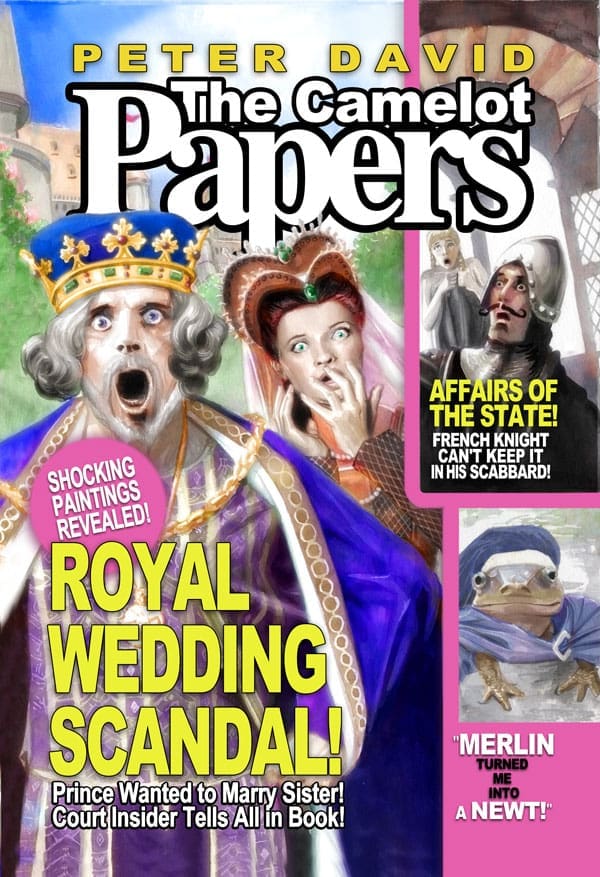
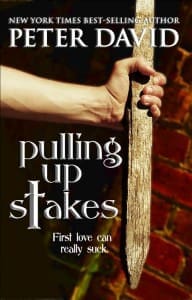
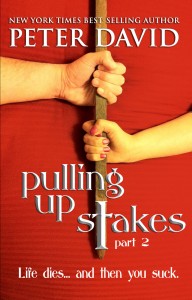
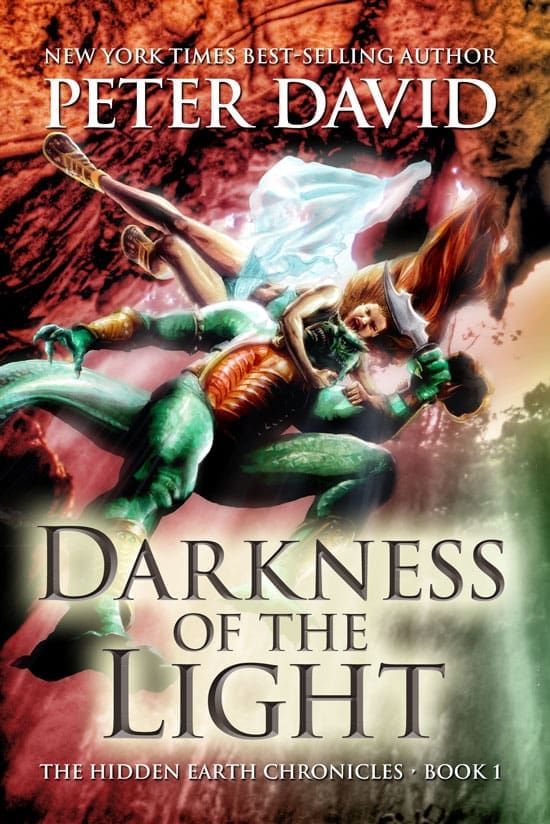
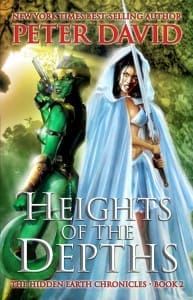
How much of this is the world conspiring against girls compared to girls prefferring girl things and boys preffering boy things?
What would your daughter have done if you gave her a Hulk Action Figure for christmas? Would she have gone “Hulk Smash!” Would she have Invite him to tea? Or perhaps whine and whine about how much she wanted a betsy Wetsy doll instead of a hulk action figure?
Rather then telling little girls they can’t play with pink things because of some strange notion that it’ll make them girly, I think we should concentrate on encouraging girls (and boys too) to explore what they like to their full potential.
For instance those building blocks you mentioned. Its been my experience that Girls like building houses, boys like building cars and planes. Wouldn’t it be better to encourage the girl to build houses, to be an architect, to try new things with her buildings rather then tell her to go do what the boys do? If she likes building houses then she might become an architect. If shes forced to build cars and planes like the other boys, well… She’ll probably go back to her room and play with dolls.
Great article. May I also bring your attention to the fact that in the PR toyline, the female Rangers tend to get shafted (due to the old adage of “girl figures don’t sell in a boy’s action figure and toy market.”
I suppose it’s too much to hope that Pink gets the Battlizer in PR S.P.D.
(Come to think of it, why (besides copyright issues) does Batman never get one? Hëll, we’ve already had “Bat Bot”…)
Kia, I belive that girls in fact are being drawn to the pink Betsy Wetsy toy not entirely because that’s what she was born wanting, but because every time you turn on the tv, or go to school and see other girls, all you see is girls playing with Besty Wetsy toys.
There is a huge gender bias in toys, and it’s not just that girls might want something different than boys. It’s that advertising pushes HARD for young girls to play with these socially acceptable toys and stay away from the male oriented ones.
The girls aren’t going to want to play with the Hulk toy, but in large part that’s because every commercial, ad etc. that has kids playing with those kinds of action figures it’s a boy using it to beat up all his other figures.
Now I wonder if advertisements had shown both a boy and a girl playing with those toys, and had shown these commercials from when the child was younh, how would they react? Well I think they might want the Hulk toy as well.
oh and PAD I believe that the reason their is a lack of gender orientation on the comic figure boxes is because of the adult buyers.
Their are always numerous grown men and women buying all the latest figures based ont heir favorite comics and tv shows at my local comic shop. I doubt as many would be willing to pick it up if it had a young boy smiling widely holding the new Spidey figure.
Well, not to suggest that I know Peter’s daughters better than he does, but I’d imagine being the recipient of a Hulk figure *now* would prompt either rolled eyes or chewing on his green head, depending on the daughter in question.
I know that all of the points you raise, PAD, are true, but it’s hard for me to grasp the degree of the problem. My sister and I are rather close in age, so we frequently ended up playing both “boy” and “girl” activities with each other. Add to this the fact that many of our toys were hand-me-downs, and the problem seems more theoretical to me than actual.
Also, the fact is I’m rather disassociated from young children’s toys compounds this. I don’t doubt, however, that the gender divide is probably about as strong now as it was back then.
I just went and bought for my daughters the stuff that I would have liked as a kid (and in the case of the trendmaster Godzilla line, the stuff I like as an adult). They turned out normal, or at least as normal as any kid of mine had a realistic hope of being.
God, don’t get me started on the gender bias in the Rangers line, Alan. I was thrilled when they threw us a bone last year and made a to-scale-with-rest-of 12″ Ranger line Blue Wind Ranger. Naturally, the other years we’ve had the 12″ line, guess which Rangers get shafted (GET YOUR MIND OUTTA THE GUTTERS!)? The women. I was so upset when that started in Time Force. I mean, for cryin’ out loud… PINK WAS THE LEADER! This year, they actually taunted us by including Yellow’s weapons with the first wave’s Blue and Black Rangers.
I just wish Bandai would get it into their heads that YES, we DO want the lady Rangers, and that YES, the line did so well in the beginning because there was equal treatment, and thus both genders could get enjoyment out of it.
Actually, tools and workshops are the biggest male-only domain of children’s toys. There were about six different variations on carpenter’s tools, tool belts, and other wood-working or home repair implements, and every single one of them was packaged solely for boys: A smiling, blue-and-red clad boy standing there proudly wielding his little tools, sometimes accompanied by beaming father. The only manufacturer who allowed a female to appear on any package was Little Tykes. Their Little Tykes Tool Pouch featured a grandfather smiling down at his woodworking grandson. The Little Tykes Measuring Set, similarly packaged, actually featured a mother, smiling down at her woodworking…son. Daughter? Get real.
Which reminds me… when my cousin was VERY little (about two or three) his favorite toys were a plastic hammer, and actual block of wood. He especially loved his block of wood. He became like Linus with his blanket. If you took it away from him, even at dinner time, he’d cry. He even had it at bed time.
In the wonderfully wacko “Phoebe and the Pigeon People” strip (Jay Lynch and Peter Whitney), the parents of little Sunshine Karma Goodvibes get her a Junior Mechanic Toolbox Set for her birthday, because they want to avoid gender stereotyping.
In the last panel, we see Little Sunshine etc. holding a hammer and a wrench and sayine “Would you like to go to the prom, Barbie?” “Oh, yes, Ken, I’d love to!”…
(Another Sunshine Karma Goodvibes “Phoebe” strip has Sunshine etc. and her mother sitting with Phoebe on a park bench; Phoebe is worrying about a recent rash of flashers in the park, and LSKG’s mommy is talking about how much the kid is learning from “Sesame Street”.
(Suddenly a classic flasher throws open his overcoat [back to viewer]; Phoebe and Mommy are shocked…
(Little Sunshine KLarma Goodvibes says “One!”)
I’m lucky my dad never bought into that whole gender-bias thing, because when I was five I wanted EVERY SINGLE He-Man toy. And I got them. 🙂 So screw you, Barbie. (Actually, I wanted Jem dolls instead, because they were all musicians, like the good folks who raised me. Yay for imprinting!)
I played with He-Man, Thundercats, Sectaurs, Go-Bots, all the fun boy stuff. Why? Boy toys are more fun, duh! 🙂 And I didn’t grow up to be a man-hating bulldyke.
That came when I was 20. 🙂
I played with nothing but boys toys tell i was about 9 because i had brothers when i collected he-man figures for example there was never a boy on any package but the playsets now i just buy the comic toys and get a look in the figure sle not because im a grown up but because im a girl
my nephew who is 5 has told me girls cant like spider-man andd i told him that boys and girls can like whatever they want
Heh heh.
Well, when I was a kid I hated Barbies and loved Legos. And no legos came in pink and purple back then.
My dad always encouraged both his girls to be anything we wanted to bo, and do anything the boys could do. Heck, he wouldn’t even let us watch Mazinger Z ’cause of the robot chick who always shot her bøøbš out and then needed the boy robot to come rescue her. Me, I wanted to be Wonder Woman!
I think it’s a little bit commercial and a little bit nature. This christmas I bought my two year old a set of dinosaur figures, because she likes to read about them in her books. The set just happened to come with a few large dinos and a few small ones of the same species as the large. The small ones didn’t become the victims of the large ones — they are the BABIES. So now I find Mommy and Baby pairs of dinosaurs all over the house. ( but sometimes they get attacked and eaten by her toy alligator. In fact, Barbie’s main function in my house is as gator food 🙂
When I was a kid, I loved my brother’s hotwheels and playing construction at a neighbor’s house with a bunch of boards, drywall, pipes and nails. I loved my cousin’s Castle Greyskull set and was sooo jealous of his Atari. My favorite commercial games were Battleship and Uno. I played with girly things, too, but tended to like more exciting toys and games that were either gender neutral or aimed at boys. I remember toys being less gender divided, but maybe that was just my perspective.